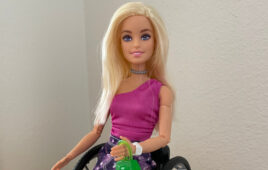
FRESH AIR: ISTOCKPHOTO.COM/PIXDELUXE
Just as every consumer who uses complex rehab seating is different, manufacturers have found different ways to manage microclimate, that interface between consumer and seating system that can result in heat buildup and retention, as well as moisture from sweating.
Lingering moisture is bad news for skin, so many seating designs and materials focus on breathability and evaporation. Dissipating moisture can be accomplished in different ways.
Got You Covered
Perhaps the most common way that seating manufacturers manage microclimate is through careful design and construction of cushion covers. Complex rehab cushions typically have outer covers or outer cover options specially created to facilitate breathability and to expedite evaporation.
For example, Stealth Products recently introduced Coolcore to select cushions in its seating line. Described as a “thermoregulation fabric,” Coolcore’s four-way stretch provides moisture wicking, moisture transportation and moisture evaporation properties to help maintain a drier microclimate.
Check out Mobility Management’s September Featuring Health Canada, AB Science, and the Rehabilitation Engineering and Assistive Technology Society of North America.VGM Updates Member Success Team
The member services organization announced a promotion and a new hire.CMS Announces Medicaid Services Final Rule on Access
The final rule seeks to make Medicaid FFS rates more transparent for stakeholders.
Commentary: Barbie Reigns, Seat Elevation Coverage Intrigues in Q1
Reviewing Mobility Management’s most-read stories this quarter.
